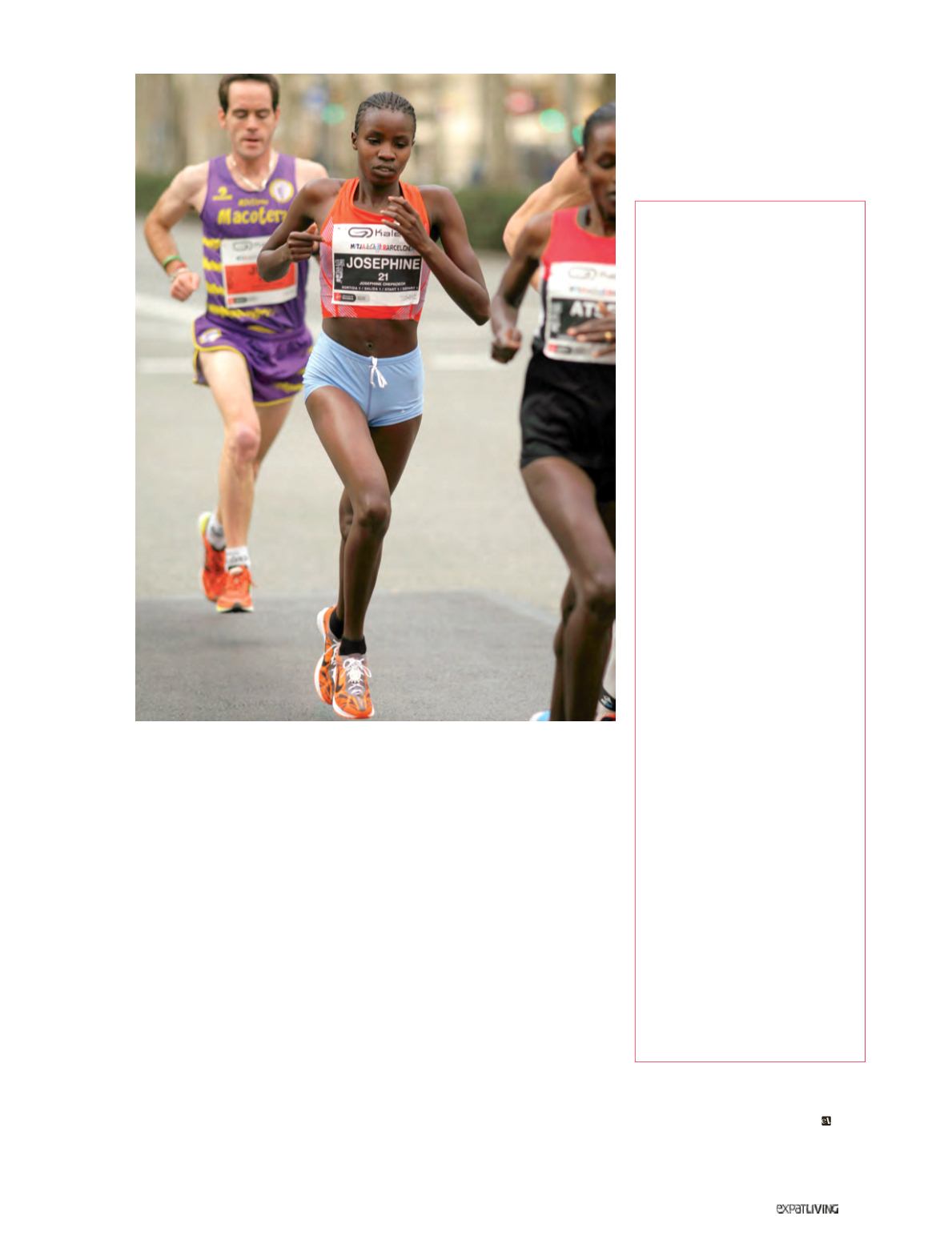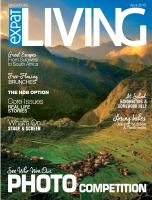

RUNNING
253
April15
Learn to Burn Fat
Here’s why you might want to. Fat is
an aerobic fuel that requires oxygen
for it to be broken down; when you’re
moving slowly, the body is able to utilise
the oxygen to burn fat. But as the heart
rate and intensity climb, a contribution
from carbs starts to kick in. The body
becomes less effective at using the
available oxygen to process fat; so the
contribution from fat drops and you
start drawing on your limited reserves
of muscle glycogen instead.
“If you teach your body to tap into fat,”
says Chris, “you could in theory go for
days on it at a consistently easy pace.”
So, how would you go about converting
an inefficient, largely glycogen-burning
motor into one that prefers fat?
There are three ways to become a
better fat burner:
Firstly, you should
run on an empty
stomach
, especially for your easy runs;
secondly, you should follow a
healthy
C oming Up
APRIL
5
NTUC Income RUN 350
5am, 800m kids’ dash, 10/21K, F1 Pit
Building
11
The Music Run
4pm, 5K, Sentosa
23
JP Morgan Corporate
Challenge
5.30pm, 5.6K, Esplanade Bridge
MAY
2
Energiser Singapore Night Trail
12 midnight, Mandai
17
HomeTeamNS REAL Run
7am, Sentosa
17
Cold Storage Kids Run
7am, 800m/6K, Gardens by the Bay
23
Meiji Run
2pm, 5K, Sentosa
24
National Vertical Marathon
63 storeys
24
Pocari Sweat Run
6.30am, 10K, Gardens by the Bay
JUNE
7
No Frills Run
7.30am, 5/10K, Kallang Riverside Park
13
The Great Relay Singapore
To ask a question, make a point or
contribute to this page, send an email
to
verne.maree@expatliving.sg.
low-carb diet
; thirdly, you should
run at
the right intensity
(or heart rate). If you
run at the right intensity, especially on an
empty stomach, your body will be in the
best state possible to learn to run on fat.
Chris says the test shows that my
own fat-burning ability is well developed.
But if you’re unaccustomed to morning
runs on an empty stomach, you’d need
to make gradual changes. “A poor fat-
burner,” chuckles Chris, “could very well
end up in a bush.”
Running doesn’t have to be as
technical and complicated as this. It can
be as simple as lacing your trainers and
heading out of the door – and continuing
to do so for the rest of your running life.
For me, though, after four weeks of
following a heart rate and distance-based
running programme, I’m looking forward
to seeing the results that others have
achieved. See you on the road!
journeyfitnesscompany.com



















